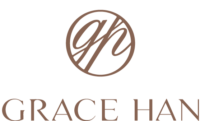April 15, 2021
Brand Relations – Your brand is as important as the product itself
You can have the best tasting, most luxurious product on the market but if no one picks it up and tries it, no one will ever know.
90% of a first-time purchase is based on the branding; it’s why a consumer will pick your product over their regular choice or your competition.
Your branding is as important as the product itself.
But don’t confuse design with branding, as many agencies do. Branding is the message you want to give your target consumer – and that message should be ‘BUY ME’.
So how do you communicate your message to your target audience?
Education
When you first start developing your product you will need to ask yourself a LOT of questions, those questions will be much the same as the ones your target audience will ask. For example: ‘what is unique about this product?’; ‘why is it better than the competition’; ‘should I risk spending money on this untried brand?’; ’does this product offer value for money?’ Your branding needs to answer all these questions.
The MOST expensive word in the Food & Drink category is ‘education’, if you need to take time to educate the consumer, away from the packaging, then you will either spend millions or fail, or both.
The best place to educate your target audience is on your product’s packaging, so your branding needs to be clear and perfect.
Trade buyers and consumers need to understand the product without having you standing there. That’s what the branding is for; to provide instant education.
Link to what your audience already understands
We all tend to Pigeonhole everything in our lives and whether we are conscious of it or not, when we see a new brand, we put it in its place. So, if you are attempting to break new ground with an idea or base ingredient then you need to add something to the mix that the consumer knows.
For example, we have just developed a drink based on the Stinging Nettle called Emunity, so to help consumers to reach out and try this we have added ingredients and flavours they recognise, like gooseberry, cucumber and wild strawberry.
The key is to make sure the messaging is easy to understand and include elements that consumers can understand instantly.
Trade buyers only want products that will sell, they don’t want old stock taking up room on their shelves. A product has to sell easily and quickly. Buyers won’t give you long to prove that your brand works, it’s in one day and out the next, so, make it easy for the consumer to choose your product fast.
Ask Questions
In order to get your branding right, you need to ask yourself and others some questions:
1/ Where will this product sell and what brands will sit alongside it? How will my product stand out against them?
2/ What is my brand message? For example, is it based on health, functionality, spoiling yourself or great taste?
3/ Will my consumer be able to read the messages I have on the packaging from a distance, without picking it up?
4/ Does my brand look premium enough for the selling price?
5/ Why should a consumer buy my brand instead of their regular choice?
Getting the answers to these questions is the first step to creating brilliant branding.
It’s about them, not you
Today we have more choice of food and drinks than ever before and the big brands are no longer dominating the market. Many consumers want to try something different, but that doesn’t mean they have all day to stand around in-store or go online to research every product. They need to be drawn to a brand that relates to then and says, ‘buy me, I am new and exciting’.
When I lived in Australia, I knew a very successful businessman who could turn his hand to anything. When I asked him his secret to success, his response was ‘when you explain something to someone and they don’t understand, it’s not them that’s stupid, it’s you for not explaining it properly’. This is the same with branding, just putting your brand name on the front and thinking the brand will sell is crazy, Consumers don’t care about a ‘new’ brand name, they care about what’s in it for them.
So, make sure your message conveys this. Always focus on them, not you.
For example, we worked on a soft drink now called Chillio. The previous design agency had simply splashed the logo across the entire bottle – with no thought to education, messaging, a relevant name or the drink’s point of difference that would encourage their target audience chose the product. In other words, the branding was all about the client, not the consumer. We rebranded it to sit alongside the craft beers so you could be out sipping Chillio without feeling embarrassed you weren’t drinking. The new name highlighted the chilli ingredient in the drink (its point of difference) and the visual design evoked fun, hot days in South America.
Point of Difference
In order to have any chance of success in today’s market you must have a point of difference. This needs to be very clear in your branding and messaging on the packaging. Just being vegan, for example, is not enough – there are masses of vegan brands now, and when it comes to drinks most of them are already vegan.
So, sit down and think about what makes your brand different, then make a list of these points and then pick the MOST important ones. These are the ones you should highlight on the packaging. The less important ones still need to be on there, but they can go on areas the consumer will read once they pick the product up.
Be wary of minimalism
Minimalism has become a trend in recent years with many designs jumping on the bandwagon. However, be careful not to make it too minimal. I have seen some laughable branding where a designer has tried to be cool but forgotten about selling the brand. This has led to the consumer ignoring it completely and reaching for the safer option, in other words, one of the established brands they already know. Find the right balance between doing too much or too little. You also don’t want to waffle; let your branding do the talking.
For example, FYX is a new collagen drink we’ve been working on. The recipe, branding and messaging has been designed to speak to sports people rather than beauty fans, so the messaging highlights the recovery and muscle repair benefits of collagen. This is delivered in a clean, no-fuss style. Minimalist yes, but also balanced – so the consumer can quickly understand what the drink is about.
Choose a name that is relevant
With the growth in food and drinks products comes a rise in the amount of new brand names, which makes choosing the right name harder, and getting a trademark more challenging. Start by researching your chosen brand name and make sure it is RELEVANT to your product and your audience. Be clever with your brand name, find something that is simple but conveys your product’s message, not just a name that sounds cool to you and your family. Afterall, some names just sound plain stupid – so just because your friends think it sounds great, does not mean it will resonate with your target audience.
For example, we recently worked on the branding of an alcohol-free adaptation of the Chapman cocktail, which originated in Nigeria. The product name, ‘Afria’, was carefully chosen to convey both the drink’s African roots and the alcohol-free content. Whatever you choose, remember this name will be for the life of the brand, so make sure it has longevity.
For example, we worked with Can’O Water, which is a brand that has reducing plastic waste at its heart. They chose a simple, ‘does what it says on the tin’ name – after all it is water in a can, so why beat about the bush? They were ahead of their time and agile enough to adapt to the demands of their target consumer; they now make their cans reusable with close caps.
Your Values
Consumers want brands to be transparent and they want to understand the brand’s heritage and values. Is the product certified to be Vegan, Fairtrade or Organic? Which of these will resonate with your target audience? More recently consumers are looking for certifications like ‘B Corporation’, which commends businesses that give as much consideration to their social and environmental impact as they do to their financial returns.
This move towards wanting to buy from companies with matching values is an opportunity for new, indie brands as the established companies can’t adapt quickly. It takes time to remove artificial ingredients and replace them with natural ones, to change supply chains to Fairtrade or a more ethical source or create a business that cares about the environment and its impact on our future. This is what today’s consumers are looking for and this is what your branding should communicate about your business.
Conclusion
Great taste added benefits and an ethos they can buy into are what will keep consumers coming back for more of your product, but you need to attract them in the first place. You need to ensure they make that initial purchase – and that’s where your branding comes in. Brilliant branding says everything a consumer needs to know in one quick glance. It speaks directly to your target audience and says ‘buy me’ in a way they will find difficult to ignore. Get it right and your fledgling product will have the very best start in life.
About the author
Richard Horwell is the owner of Brand Relations, a specialist food and drink marketing and branding company based in London. Over the last 13 years, Brand Relations has been behind the launch and development of over 100 brands in the UK. Richard has also built up and sold companies of his own in the Food and Beverage sector. He has over 30 years’ experience in marketing FMCG brands around the world, having lived and worked in the UK, USA, Australia and the Middle East.
W: www.brandrelations.co.uk
Social media






